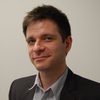To build a more robust and profitable industry – and to prevent a cascade of bankruptcies – catastrophe insurers should use a more diverse set of risk assessment models, a new Oxford University study has found.
The research, published today in the Journal of Economic Interaction & Coordination, confirms industry worries that reliance on an increasingly small number of risk models is creating a dangerously fragile situation.
Catastrophes are notoriously difficult to predict, making accurate models of catastrophe risks almost impossible. If everyone in the industry bets on the same model then everyone runs the risk of being wrong at the same time, creating high levels of systemic fragility. Yet there are currently only three significant providers of professional risk models (RMS, EQECAT, and AIR) and, in many cases, firms use just one risk model.
The study found that widespread use of four risk models, rather than one, would build a much stronger catastrophe insurance industry. This greater diversity of perspectives would:
- halve non-insured risks;
- allow 20% more insurance firms to survive;
- increase the capital available for writing business by 50%.
For these reasons, the researchers call on industry regulators to encourage the use of a wider set of approved risk models.
To arrive at these findings, researchers built an ‘agent-based model’ of the European catastrophe insurance industry – the first of its kind. Taking this approach allowed them to build a realistic model of this complex industry and study its behaviour under thousands of different scenarios.
Professor Torsten Heinrich, who co-authored the study, says, “No one knows for sure which catastrophes are around the corner, so of course some losses are unavoidable. But if everyone bets on the same risk model – as they often currently do – it significantly raises the risk of a disastrous bankruptcy cascade.
‘There’s a fix for this fragility, though: if regulators encouraged the use of a more diverse set of risk models, the industry could be both more robust and more profitable. Using a greater variety of approved risk models would be better for individual firms and customers, and provide a far more stable foundation for the sector at large.’

“No one knows for sure which catastrophes are around the corner, so of course some losses are unavoidable. But if everyone bets on the same risk model – as they often currently do – it significantly raises the risk of a disastrous bankruptcy cascade.’ Professor Torsten Heinrich
Dr Juan Sabuco, who co-authored the research added, “The Coronavirus pandemic showed how hard it is to correctly predict the next big catastrophe. The climate crisis will make this issue even more urgent; bad hurricane seasons already put huge strain on the sector, for example.
“Given this, anything that improves the health of the industry and
halves the number of uninsured risks is win-win; insurance is a social
good as well as an economic product, after all.”

'Anything that improves the health of the industry and halves the number of uninsured risks is win-win; insurance is a social good as well as an economic product, after all.' Dr Juan Sabuco
The industry’s fragility was recently revealed by the 2017 Atlantic hurricane season. The three most devastating hurricanes that year – Harvey, Irma, and Maria – alone resulted in combined insured losses of $92 billion. Yet this was a lucky near miss: had losses been slightly higher or the crisis not happened during a soft market with a lot of capital available, bankruptcies would have been a real danger and could have affected many insurers.
Notes to editors:
For further information please contact Jessica Kaplan, Communications Manager at the Institute for New Economic Thinking at the Oxford Martin School, University of Oxford: Jessica.Kaplan@inet.ox.ac.uk / +44 7956 641 829.
- The study was authored by Professor Torsten Heinrich, Dr Juan Sabuco and Professor J Doyne Farmer, and is available to read here.
- Torsten Heinrich is Professor of Microeconomics at Chemnitz University of Technology and an Associate at INET Oxford. Dr Juan Sabuco is an Associate at INET Oxford and a Postdoctoral Researcher at the Oxford Martin School, University of Oxford. J. Doyne Farmer is Baillie Gifford Professor in the Mathematical Institute at the University of Oxford and Director of the Complexity Economics programme at INET Oxford.
- Agent-based models offer more realism than the purely formal models of classical economics. For example, since they model the interaction of individual firms, they can illustrate how chains of firm-level events can spark industry-wide effects. The study’s agent-based model proved a good match for the real catastrophe insurance industry in that it was able to realistically model both the sizes different firms typically grow to and the real ‘insurance cycle’ – the industry’s cycle of profits and losses.
- The study modelled the EU catastrophe insurance industry which operates under the insurance regulation framework Solvency II. Under Solvency II, insurance companies are required to use only certified risk models, leading to a situation in which only a few firms provide risk models.
- Such bankruptcy cascades have happened before in the insurance industry. In the 17th century a significant part of the budding industry folded because firms failed to diversify their risks enough and were caught off guard by the Battle of Lagos, for example. In the last few decades, systemic dangers to the industry have included oil rig fires (Piper Alpha disaster, 1988), asbestos-related claims, and bad hurricane seasons (2004, 2005, 2017). It is too soon to tell how well the industry will emerge from the Coronavirus crisis.
(Photo by John Middelkoop on Unsplash)








